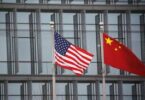Claude Barfield
Section 301 of the Trade Act of 1974 authorizes the Office of the US Trade Representative (USTR) to investigate unfair trade practices that hurt US businesses and workers and institute a range of retaliatory measures, including but not limited to tariffs. Thus far, Section 301 has proved a toothless tiger against the most urgent target: China’s predatory state capitalism.
To review, though unilateral actions were restricted under the new regime of the World Trade Organization (WTO) from 1995 onward, both the Trump and Biden administrations have defended Section 301 actions, arguing that WTO rules fail to rein in China’s unfair trade practices.
via Adobe Open Commons
In May 2017, the Trump administration launched a Section 301 investigation on allegedly unfair Chinese trade policies, regulations, and practices — and in May 2019, the USTR made public its findings. Unlike other Trump administration trade publications, these findings were deeply researched and carefully documented and included sections on state subsidies, forced technology transfers, closed tech sectors, intellectual property theft, and the use of the Great (internet) Firewall as an instrument of industrial policy. The report ultimately documented China’s blueprint for technological supremacy laid out in its famous “Made in China 2025” plan. Under its auspices, the Trump administration then levied some $370 billion in tariffs against China. Unfortunately, given President Trump’s willful ignorance of trade policy economics, he then architected the so-called “Phase One” China trade negotiations, under which China promised to buy a set amount of US agricultural and manufactured goods — a pledge it has failed to keep. A promised “Phase Two,” which would have challenged Beijing’s most egregious trade and anticompetitive practices, never materialized.
The Biden administration sharply criticized Trump’s China trade and technology policies, but then continued key elements including heavy tariffs on Chinese goods. (USTR Katherine Tai has repeatedly called tariffs a “legitimate” tool of US trade policy.) On China, the Biden administration committed to an immediate “top to bottom” review of existing policy; some 14 months later, there is still no comprehensive public result.
Last October, Tai gave a much-publicized speech on China at the Center for Strategic and International Studies. While Tai proved an adroit verbal fencer, the main takeaway was: “Where’s the beef?” She affirmed the need for an “honest conversation” with her Chinese counterparts but gave no details on what actions the US would take to counter Beijing’s predatory tactics. Further, the Biden administration has prioritized China’s fulfillment of the Trump Phase One agreement, which has done nothing to meaningfully challenge Chinese state capitalism. Since October, the Biden administration has levied some actions against individual Chinese companies — most particularly through the use of export controls and invoking the Department of Commerce’s “entity list” to prohibit supplying Chinese companies with key components — but the toothless “honest conversation” phase of broader US-China trade negotiations remains the dominant format.
Section 301
This brings us back to the discussion of Section 301 as a tool for sanctioning Beijing’s obdurate refusal to shift away from state intervention to protect and subsidize its strategic high-tech sectors and individual companies. Under growing pressure from Congress, the USTR has now promised to “realign” the Biden administration’s China trade policy by moving to challenge Beijing more directly. The administration has also been considering a new Section 301 investigation since last fall but has reportedly postponed launching the process.
This is a mistake for a number of reasons. First, much of the work has already been done: The Trump administration’s in-depth 2019 findings could readily be updated as Beijing’s systematic high-tech protectionism and subsides remain in place and unchanged. The Section 301 statute grants USTR wide latitude to fashion remedies far beyond own-goal tariffs. Additionally, the Biden administration would have at least a year to complete the process and decide on more effective remedies — and attempt to bring allies on board for specific actions. USTR Tai has repeatedly complained that the US needs “new tools” to counter China, yet she seems unable to persuade the White House to fashion such tools. My AEI colleague Derek Scissors has often argued that neither the Trump nor Biden administrations have been “serious” about challenging Beijing’s blatant market-destroying tactics. Walking away from a new Section 301 investigation is a telling example of that inconstancy.
Courtesy: (AEI.org)






